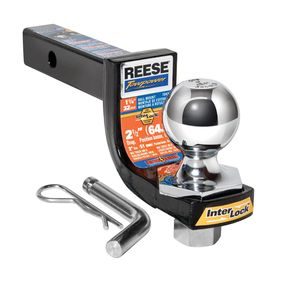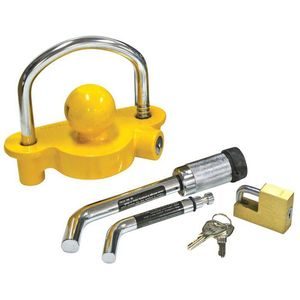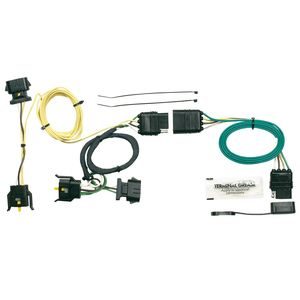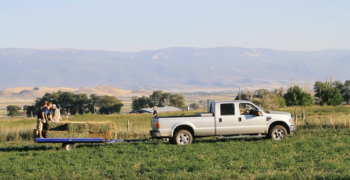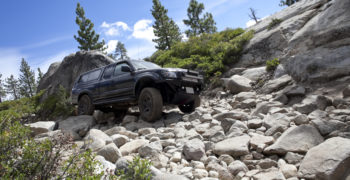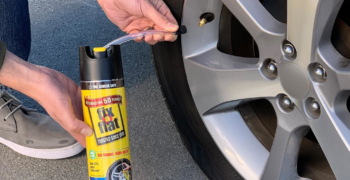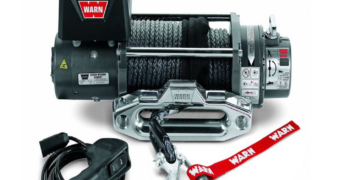How to Select the Right Hitch Ball for Level Towing
The ball mount raises or lowers the hitch ball to ensure that your tow vehicle and trailer remain level as you travel. Correct ball mounts will match shaft size to receiver tube dimensions. The key is to get a ball mount that allows the trailer coupler to be level with the ground.
Suggested AutoZone Products
What is a Ball Mount?
A Ball Mount is a removable hitch ball platform that slides into the receiver of a hitch and fastens with a pin and clip. Different ball mounts can be used to raise or lower the height of the ball to allow for level trailer towing.
Different classes of ball mounts fit different receiver tubes:
- Class I & II: 1-1/4″ receiver tube
- Class III & IV: 2″ receiver tube
- Class V: 2″ or 2-1/2″ receiver tube
It is important to identify mounting location, hitch ball, shank diameter, and thickness if you are not purchasing a combo. Then you can measure the diameter of the hole and thickness of the mounting location to choose a matching ball mount.
Related: Types Of Trailer Hitches
What is a Hitch Ball?
A hitch ball (or trailer ball or just ball) is the ball-shaped attachment that connects the trailer to a hitch. While the diameter of the hitch ball is fairly standard, shank diameters, and hitch ball weight ratings may differ. The rating of the hitch ball is just as important as the receiver hitch ratings.
Understanding Hitch Ball Measurements
A hitch ball (or trailer ball or just ball) is the ball-shaped attachment that connects the trailer to a hitch. While the diameter of the hitch ball is fairly standard, shank diameters, and hitch ball weight ratings may differ. The rating of the hitch ball is just as important as the receiver hitch ratings.
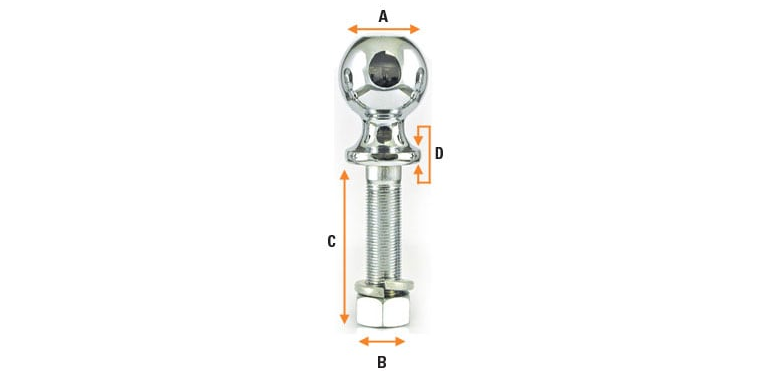
Ball Diameter (A): Check the top of the trailer coupler for the size of the ball diameter required – the width of the round portion at the top. The size is usually stamped there. Recreational and light commercial hitch balls come in a variety of sizes including 1-7/8″, 2″, 2-5/16″ and occasionally 3″. In general, lighter trailers use smaller hitch balls.
Shank Diameter (B): This is the diameter of the threaded shaft that is inserted through the ball mount. Shanks come in a variety of sizes (5/8″, 3/4″, 1″, and 1-1/4″) and capacities, ranging from 7,000lbs on the smaller diameter to 17,000lbs for large ones. It needs to be precise as any amount of movement can cause wear or strain that can cause it to fail under load.
Shank Length (C): This is the length of the shaft that extends beyond the mounting base of the hitch ball. It is important to use a shank that is long enough to extend beyond the thickness of the ball mount to ensure that enough threads are available to securely fasten the ball to the mount.
Shank Rise (D): The height of the shank can be used to raise a trailer back to level in the event the “rise” or “drop” of a ball mount is inadequate. It’s the portion under the ball and above the mounting base.
Related: Trailer Hitch Installation Guide
Step-by-Step Guide to Leveling Your Trailer
1. Arrange Your Vehicle and Trailer
Park your vehicle and trailer on level ground, not connected. You’ll be adjusting the trailer height separate from your pulling vehicle.
2. Level Out the Trailer Tongue
Place a level on top of the trailer tongue, and adjust the trailer up or down until the bubble inside the level shows that the trailer tongue is level with the ground below.
3. Measure the Draw Bar Shank’s Height
Using a tape measure or something similar, measure from the top of the part of the draw bar that connects with the receiver tube to the ground. Record this measurement and label it A.
4. Measure the Trailer Tongue’s Height
Get your tape measure again and measure from the bottom of the trailer tongue to the ground. Record this measurement and label it B.
5. Subtract for Drop
Subtract B from A for the amount of “drop” you will need to keep your trailer level (A – B = “drop”).
If the “drop” value is negative, it is referred to as “rise.”
6. Use the Correct Ball Mount and Ball
Using the measurements you have, determine if you have the correct hitch ball. If it’s not within an inch, find a new ball mount and ball combination that compensates for the difference.
Ensuring Safety with Proper Weight Capacity
Choosing the right hitch ball and ball mount is about safety while towing. If the ball is too large for the trailer tongue, it won’t fit at all, and if it’s smaller, the trailer could pop off when you’re driving. You could have a runaway trailer, or it could pop up and collide with the back of your vehicle.
As well, the weight capacity of the hitch ball should never be exceeded. Check your trailer’s gross trailer weight or GTR, and use a hitch ball that offers at least that much capacity.
Lastly, ensuring the trailer is level keeps the tongue weight as rated. For example, if it’s rated at 150lbs of tongue weight, a lower drop could mean the tongue weight is much higher, and it affects how your vehicle rides and pulls the trailer. A balanced load is crucial.
Related: How To Hitch A Trailer
Choosing the Right Ball Mount Class
The ball mount needs to fit precisely in your trailer hitch receiver. There are typically three sizes to choose from:
- A 1.25-inch ball mount fits in a Class I or II hitch, and it’s best for small trailers up to 3,500 lbs.
- A 2-inch ball mount fits a Class III and IV hitch, and can be used for up to 10,000lbs of GTW.
- A 2.5-inch ball mount fits Class V hitches and can be rated for up to 17,000lbs.
FAQs
1. What size hitch ball do I need for my trailer?
Look at the top of the trailer tongue for a size specification. It will be 1 ⅞-inch, 2-inch, 2 5/16-inch, or 3-inch.
2. How do I know if my trailer is level?
Place a level across the trailer draw bar when the vehicle is connected to determine if it’s level.
3. What happens if my trailer isn’t level when towing?
It can exert too much or too little downward force on the back of your vehicle than it should, changing the dynamics of how your vehicle handles.
4. How do I measure the “rise” or “drop” needed for my hitch?
With the trailer level, measure the difference between the bottom of your trailer’s coupler and the top inside edge of your hitch receiver.
5. How much weight can a hitch ball handle?
It depends on the part. They’re stamped with their rating, typically between 7,000 and 17,000lbs.
Related: What Size Winch Do I Need?
